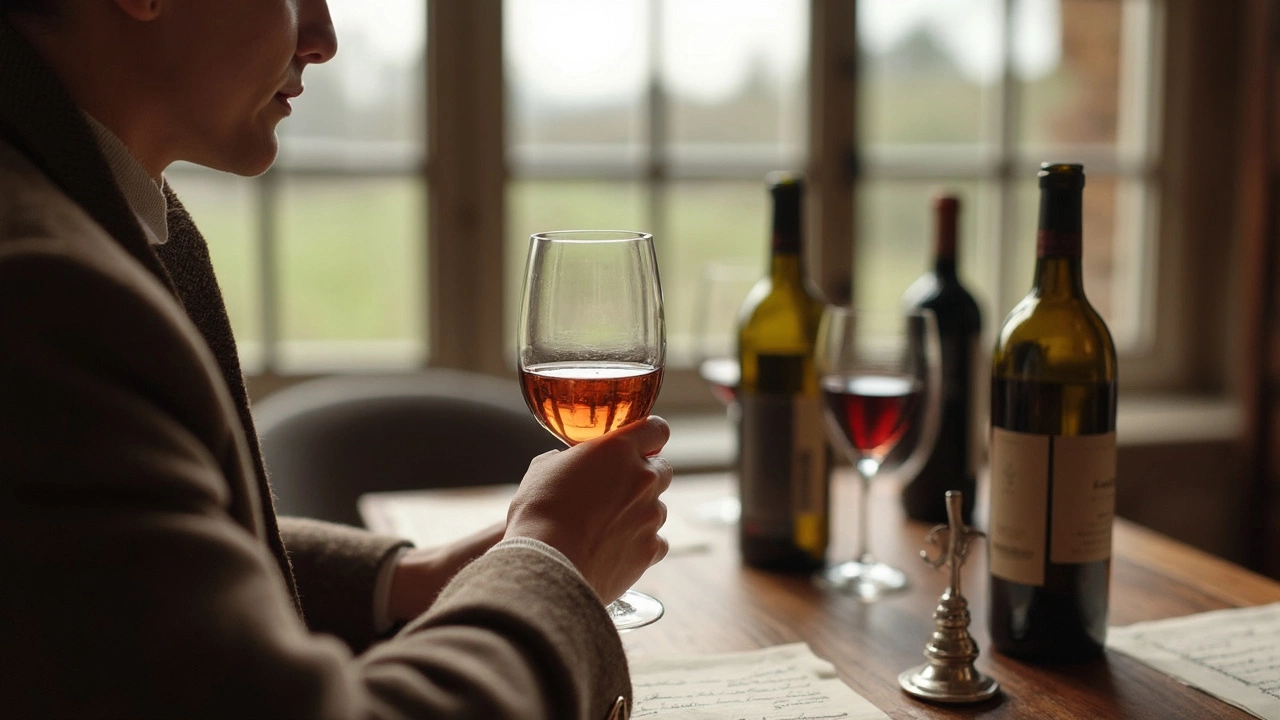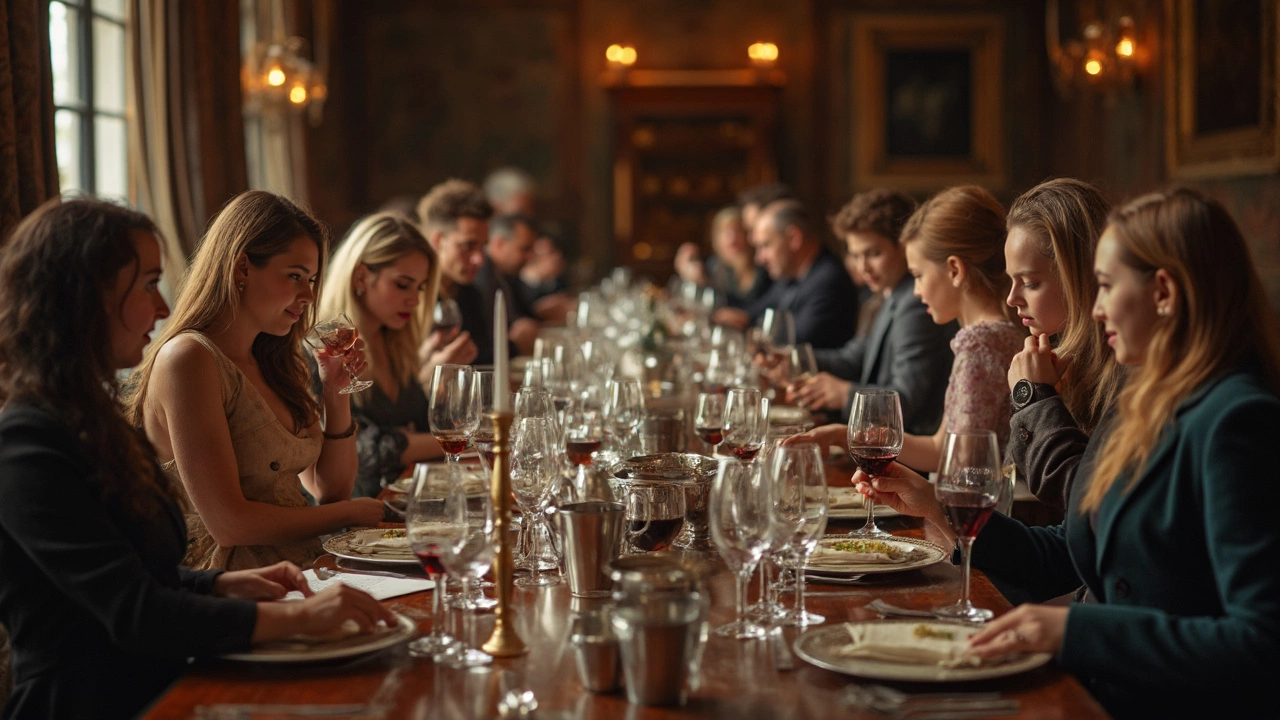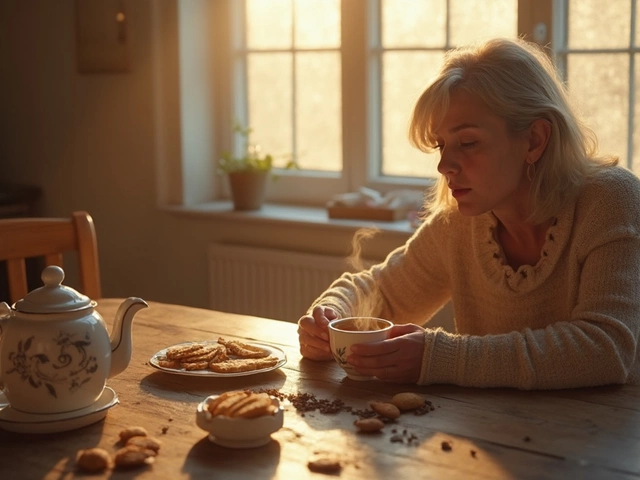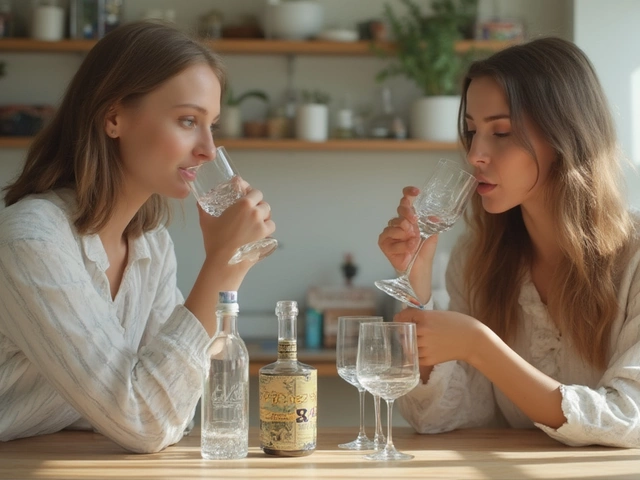Have you ever been to a wine tasting and wondered if you're supposed to actually drink the wine? It's a question that might seem simple but has layers, etiquette, and downright practical reasons behind it.
First off, the idea of spitting out wine might seem odd or even wasteful. But in the world of wine tasting, it's perfectly normal—more like a badge of honor among seasoned tasters. Why spit, you ask? Well, for starters, it prevents you from getting tipsy too quickly, especially when you're there to taste several wines.
That doesn't mean you have to spit every time. There are moments when sipping and swallowing is perfectly acceptable, like when you're savoring a particular wine or wanting to pair it with a fantastic cheese appetizer.
The key is to focus on the flavors and aromas. You want to let the wine linger in your mouth, and experience its full depth before you decide to spit or sip. Doing this really lets you appreciate what makes each wine unique.
And then there's the etiquette to consider. Swirling your wine, taking in the aroma, and understanding when and how to express your thoughts on it—all these play into the experience. But more on this below.
- The Purpose of Spitting
- When It's Okay to Drink
- Tasting Techniques
- Understanding Wine Etiquette
- Maximizing Your Wine Experience
- Common Mistakes to Avoid
The Purpose of Spitting
So, what's up with all the spitting at wine tastings? Doesn't it go against what we think we should be doing with a glass of wine? Well, here's the deal. **Wine tasting** is about experiencing a variety of wines, understanding their flavors, and expanding your palate—without getting knocked out by alcohol before you've even reached the reds.
When you attend a **wine tasting**, the lineup can sometimes include dozens of different wines. Just imagine taking full gulps of each one! Not only would you get tipsy pretty quickly, but your ability to accurately taste and critique each subsequent wine would be compromised.
As renowned sommelier Karen MacNeil aptly puts it, "Tasting is not about drinking. It's about understanding what you're tasting."
By spitting, you allow yourself to savor the wine without consuming the alcohol. The process boosts your wine tasting skills because you're focused on the sensory aspects: aromas, flavors, and mouthfeel.
Why It's Okay to Spit
While it might sound weird at first, spitting is totally fine in the wine world. It's actually expected in professional **wine tasting** events. In elite circles, there are occasions when taster notes can make or break a wine's reputation, and those pros? They're spitting, too. Participating in this practice allows you to keep your senses sharp, so you aren't influenced by the alcohol.
- Maximizes Palate Sensitivity: Staying sober keeps your taste buds sharp throughout the tasting.
- Keeps it Professional: You'll enjoy the experience without the risk of over-indulging.
- Traditionally Accepted: Rest assured, no one's judging—that's how it's done.
Plus, many places provide discreet spitting cups or designated areas for this purpose. If you're unsure about how to go about it, just watch the pros. They'll give you a pretty clear idea of how it's done, all while keeping it classy.
When It's Okay to Drink
So, you've swirled your glass, sniffed that lovely bouquet, and finally tasted the wine, and now you're wondering—can I drink this? Well, sometimes yes! Drinking the wine at a wine tasting can be a part of the experience, and here's when it's totally cool.
Special Wines or Celebrations
If you're at a tasting that features a rare or special wine, it's often encouraged to fully enjoy the sip. These moments can turn into celebratory toasts, and it's more about savoring the experience than mastering tasting techniques.
In these cases, drinking rather than spitting can honor the uniqueness of the wine and even the occasion—like a special event or milestone being celebrated at the tasting.
Wine and Food Pairings
Sometimes, tastings will pair wines with bites of food to enhance the flavors—think cheese, chocolate, or charcuterie. Pairings can transform the taste of the wine and engage your palate in a new way. Drinking the wine here helps you savor the combined flavors, making it an integral part of the experience.
The 3 Sips Rule
Here's a practical guideline often used by wine enthusiasts called the "Three Sips Rule":
- First Sip: Cleanses your palate from other flavors.
- Second Sip: Allows you to taste the complexity and character of the wine.
- Third Sip: Confirms what you’re tasting and lets you decide if you truly enjoy it.
This method not only helps in evaluating the wine but feels more fulfilling than a quick taste.
Remember, you're not chugging or attempting to finish every glass. It’s about thoughtful drinking as part of your wine exploration. So, when you find a bottle that's worth savoring or you're in a social setting that encourages a toast, these are those special times where drinking is more than okay—it’s part of the joy of wine tasting.
Tasting Techniques
When it comes to wine tasting, mastering a few key techniques can elevate your experience and understanding significantly. It's not just about drinking wine; it's about truly appreciating its nuances.
See and Swirl
Start by holding your wine glass against a white background to observe the wine's color and clarity. This can give you hints about the wine's age and grape variety. Young white wines tend to be pale or light golden, while reds can range from bright ruby to deep purple.
Next, give your wine a gentle swirl. This action releases the aromas and prepares the wine for a full sensory evaluation. A good swirl will also show the wine's 'legs,' the streaks that run down the glass. Contrary to popular belief, they don't indicate quality but can tell you about the wine's alcohol content.
Sniff and Savor
The sense of smell is vital in wine tasting. Place your nose over the rim and take a deep sniff. You might detect floral notes, citrus, spices, or earthiness, depending on the wine. These aromas often mirror or enhance the wine's taste, offering a more complete experience.
Pro tip: Remember, there's no right or wrong in what you smell. It's more about what the wine reminds you of.
Sip and Suck In Air
Here's where it gets interesting. Take a small sip and let it coat your tongue. To intensify the flavors, try sucking in a little air through your lips. It might sound and feel a bit strange, but it can enhance the flavors noticeably, allowing you to pick out subtle tastes you might have missed.
Analyze and Appreciate
Now, pause and think about what flavors linger. Is it fruity, spicy, or maybe oaky? Consider the wine's body—is it light, medium, or full? This whole process should give you a sense of the wine's complexity and balance.
For those serious about honing their wine tasting skills, consistency is key. The more wines you taste using these techniques, the more adept you'll become at picking out the differences and nuances.

Understanding Wine Etiquette
When you're attending a wine tasting, knowing the etiquette can really enhance your experience and that of the people around you. It might seem a bit overwhelming at first, but it's mostly about common sense and respect.
Starting with the Basics
First off, always hold your glass by the stem. This keeps your fingers off the bowl, which can affect the temperature of the wine—not to mention leave smudges all over. It’s about appreciating the drink’s qualities without altering them.
Swirling the wine is a common practice, but do it gently. The aim is to let the wine breathe and release its aromas, not make a mess. After swirling, take a moment to sniff the wine and try to identify any aromas. This can really help you appreciate its complexity.
Engaging with the Host or Sommelier
Show interest and engage with the person hosting or pouring. They often have a wealth of knowledge about the wine and its origins. Ask questions if you’re curious; it’s a great way to learn.
To Sip or Not to Sip
Respect the unspoken rule of spitting in professional contexts, especially if you're tasting several wines. The venue usually provides spit buckets. Don’t worry about offending anyone; it’s actually expected.
Respecting Others
Keep your voice down. Wine tasting is often about quiet reflection and conversation. Extremely loud discussions can distract others from their experience.
Avoid wearing heavy perfume or cologne. Strong scents can compete with the delicate aromas of the wine and diminish the tasting experience for everyone.
Wrap-Up
If you find a wine you love, it's okay to take a mental or actual note of it and look for it later. Wine tastings are more about discovering new favorites than stocking up.
By understanding and applying these basic elements of wine etiquette, you'll not only enjoy the experience more but also look like a pro doing it.
Maximizing Your Wine Experience
When it comes to making the most of wine tasting, a little preparation and a few savvy tips can take your experience from ordinary to extraordinary.
Discover Your Preferences
First, understand what you like. Do you lean towards reds with robust flavors or white wines with a crisp finish? Knowing your preferences can guide you on what to focus on, making the wine tasting more personal and enjoyable.
Use Proper Technique
Paying attention to technique can greatly enhance your tasting experience. Here's a quick guide:
- Swirl the wine in your glass to release its aromas.
- Take a moment to sniff the wine. You can pick up on notes like berries, citrus, or even hints of chocolate.
- Sip and hold the wine in your mouth for a moment to truly savor its flavors.
- Evaluate the wine's finish, which is the taste that lingers after swallowing or spitting out the wine.
Pace Yourself
The biggest rookie mistake? Trying to savor every single wine at once. It's okay to skip some wines if they don't interest you or if you need a palate break. Spitting out the wine can also help you stay sharp.
Engage with the Winemaker
Don't hesitate to ask questions. Winemakers love passionate visitors. Asking about the wine's origin or how it's made can deepen your appreciation and knowledge.
Take Notes
Capture your experience in a wine journal or on your phone. Jot down names, flavors, and what you felt about each wine. This way, you can revisit wines you loved later on.
Enjoy the Environment
The atmosphere of the vineyard or tasting room can reflect in your experience. Take it all in—the scenery, the company, and even the little details like the choice of music.
With these tips, you'll not only enhance your wine tasting but also build a personal connection with the wine world. Now, go ahead and taste with confidence!
Common Mistakes to Avoid
Diving into the world of wine tasting is fun, but there are a few pitfalls worth steering clear of to make sure you have the best experience possible.
Ignoring the Spit Bucket
One of the most common mistakes is looking past the spit bucket entirely. While sipping might sound more enjoyable, using the spit bucket is key to tasting multiple wines without feeling woozy. Trust me, your palate—and your head—will thank you.
Over-Analyzing Every Sip
It's easy to get caught up in trying to identify every single flavor. Sure, maybe there's a hint of oak or a touch of citrus, but spending too much time on this can take away from the overall experience. Instead, focus on what you like and enjoy the moment.
Skipping Water and Snacks
Keeping hydrated and snacking is as important as the tasting itself. Water helps cleanse your palate between different wines, and snacks can refresh your taste buds. Don’t overlook these essentials.
Avoid Being Intimidated
Wine tastings can seem pretty elite, but remember, it's your experience. Don’t shy away from asking questions just because others might seem to know more.
Rushing Through
Take your time. Winemakers put a lot of effort into their creations, and rushing means you might miss out on appreciating the wine's complexities.
- Wine Tasting is about enjoyment—don't feel pressure to 'get it right'.
- Use the provided note cards or apps to jot down your thoughts.
- Try not to wear strong perfume or aftershave, as it can interfere with your senses.


